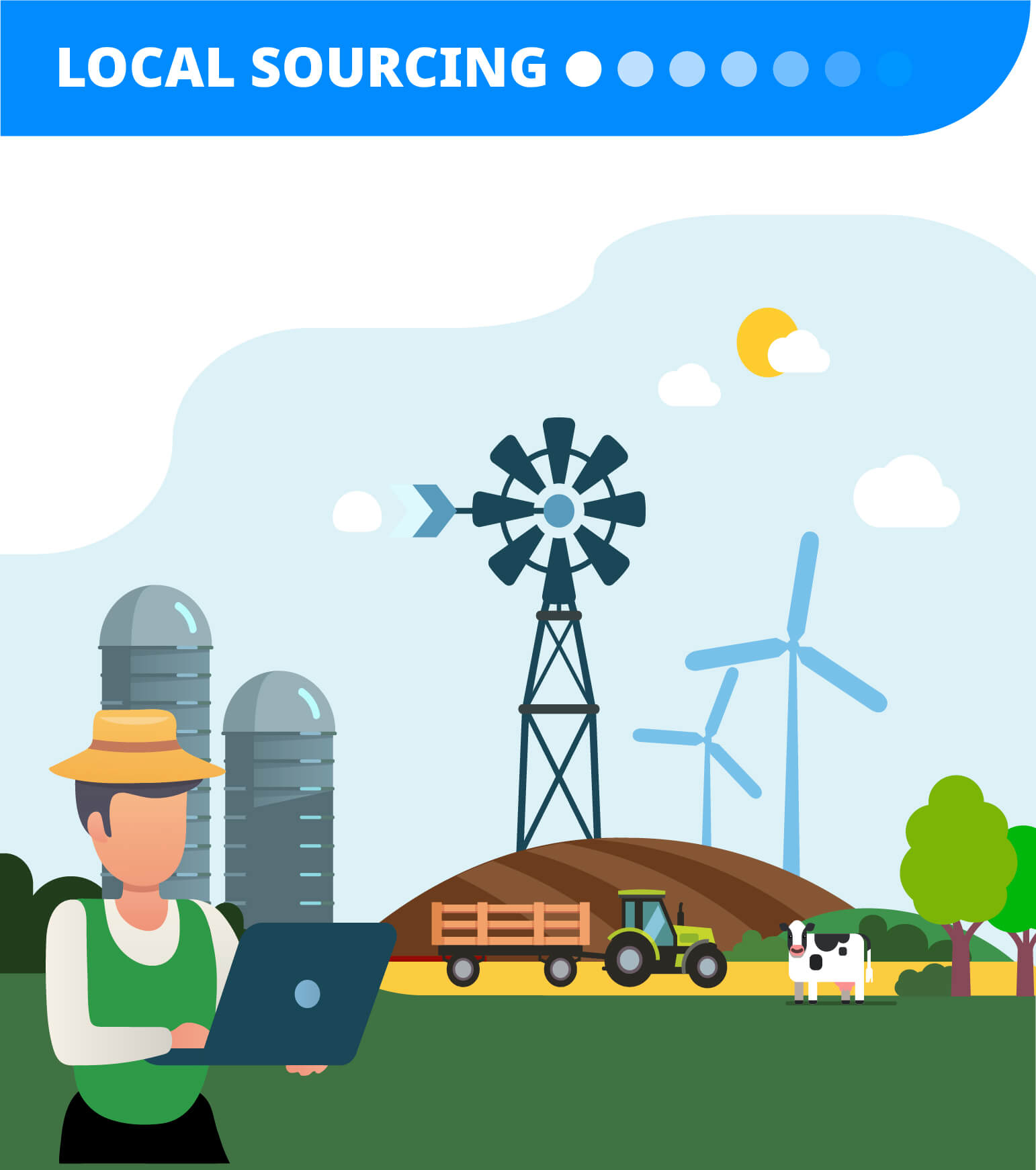Ensuring Traceability and Quality in Food Production: The Role of Technology
In recent years, one of the biggest challenges in the food industry has been the inability to trace where food comes from. With advancements in preservation techniques and transportation, purchasing and consuming food from any part of the world has become easier. This makes understanding food production's why, where, and how crucial.
Today's consumers look for validation of sustainability and transparency in their food choices. They well-informed and proactive in questioning brands about their food production and procurement processes. To cater to this demand, brands are going the extra mile to source high-quality raw materials and produce goods that adhere to sustainable agricultural practices and adopt stringent safety standards. They leverage platforms like Cropin that help them validate their organization’s sustainability mandates.
PepsiCo is a prime example, having refined its procurement model to achieve better quality control and encourage sustainable farming practices. For its Quaker brand, Tropicana Lays, and Walker crisps, PepsiCo directly sources key crops—unprocessed oats, oranges, and potatoes—from farmers engaged in sustainable farming. Impressively, 79% of these crops come from farmers participating in PepsiCo’s Sustainable Agriculture Program.

How Technology Transforms Agriculture and Procurement
According to a 2023 report by MarketsandMarkets, the global precision farming market size is projected to grow to $21.9 billion by 2031, growing at a compound annual growth rate (CAGR) of 10.7%. This growth underscores the increasing reliance on technology to enhance agricultural practices and ensure food safety.
The integration of technology in agriculture has transformed crop cultivation and procurement processes. Remote sensing, artificial intelligence(AI), and farm management software are reshaping agribusiness operations. Leveraging these technologies helps agribusinesses maximize productivity and profits while minimizing their environmental footprint.

Remote Sensing and AI in Crop Acreage Detection
Remote sensing technology and AI allow businesses to detect which regions are cultivating the crops they need and accurately assess crop health. These models combine historical performances, with sophisticated weather data, satellite imagery data, water usage, soil properties, and more to offer predictive analytics about regions that can consistently supply quality raw materials.
Continuous monitoring of crops in sourcing regions ensures procurement teams are cushioned from climate change surprises. In case of a sudden shortage of commodities of interest, intelligence provided by these models guides users to the best region for sourcing the deficit. Additionally, users can also leverage these technologies to identify ideally suited new regions to cultivate crops of interest.

Digitization for Near Real-time Crop Health Monitoring
Continuous monitoring of farms is crucial to ensure that the produce meets the quality standards specified by the brand. Monitoring crop health across vast networks of smallholder farms is both challenging and essential for farming businesses and large food corporations. When done manually, it impairs data-driven decision-making. Digitization through farm management software like Cropin Grow provides near real-time, 360-degree farm monitoring. It helps in the early detection of anomalies, enabling timely corrective actions that can be shared with farmers to ensure high-quality produce. For example the disease early warning system offered by Cropin enables farmers to protect their crops against diseases and pests and agribusinesses to safeguard its supply-chain.
A 2022 report from the Food and Agriculture Organization (FAO) highlights that the adoption of digital tools in agriculture has led to a 15-20% increase in crop yields and a 30% reduction in input costs for farmers. These improvements are crucial for enhancing food security, particularly in developing countries where smallholder farms dominate the agricultural landscape.
Building Trust with Traceability
A 2023 study by IBM revealed that 71% of consumers are willing to pay a premium for brands that provide full transparency and traceability. First-mile traceability is no longer a luxury; it’s a necessity. Brands offering transparency about their sourcing and production methods build stronger connections with consumers, improving sales and brand loyalty.
Additionally, traceability also plays a critical role in managing food safety incidents. For instance, a leading US vegetable supplier recalled baby spinach in ten states after detecting salmonella. Complete end-to-end traceability enabled the company to swiftly identify and recall the contaminated products, preventing potential harm while demonstrating its commitment to safety. While such incidents can negatively impact consumer trust, the ability to respond quickly and transparently helps mitigate long-term damage to the brand's reputation.
Promoting a Digital Strategy for Local Sourcing
Several agri-food businesses have committed to sourcing a significant portion of their raw ingredients locally. This supports sustainable livelihood for local farming communities and ensures access to quality raw materials and cost-effective operations. Tailoring digital strategies to local complexities enables organizations to make informed sourcing decisions and procure optimal quantities of agri-commodities.
One notable example is a major brewing company that partnered with Cropin to leverage the AI-led predictive solution Cropin Intelligence to analyze local sourcing options. This partnership has been pivotal in achieving their goal of sourcing 60% of raw materials locally by 2020. By utilizing predictive analytics, the company can identify the best regions for sourcing and ensure a steady supply of high-quality raw materials while also supporting local farmers.
Sustainable Farming Practices
Sustainable farming practices are at the core of modern agricultural technology. These practices enhance crop yields, protect the environment, and ensure the long-term viability of farming operations. Techniques such as precision agriculture, which uses GPS and IoT sensors to optimize field-level management, are becoming increasingly popular.
A 2022 report by the World Economic Forum highlights that sustainable farming practices can reduce greenhouse gas emissions by up to 30% and increase biodiversity by 20%. By adopting these practices, companies can meet consumer demands for sustainable products while also contributing to global environmental goals.
The Future of Food Traceability and Technology in Agriculture
As technology continues to evolve, the future of food traceability and agriculture looks promising. Advances in AI, machine learning, and remote sensing will further enhance the ability to monitor and manage agricultural practices, ensuring that food production is sustainable, safe, and transparent.
Technologies such as remote sensors and satellite monitoring are set to transform how crops are monitored and harvested. These technologies offer unprecedented precision and efficiency. They complement manual efforts and minimize the risk of data leakage.
Conclusion
Integrating advanced technologies in agriculture transforms how food is produced, sourced, and monitored. Brands like PepsiCo are leading the way by adopting sustainable practices and leveraging technology to ensure high-quality, traceable food products. As consumer demand for transparency grows, the adoption of these technologies will continue to drive the industry toward a more sustainable and trustworthy future.
By embracing digital tools and sustainable practices, the food industry can meet today's challenges while preparing for tomorrow's demands. The journey from farm to fork is becoming more transparent, efficient, and sustainable, benefiting consumers, farmers, and the environment alike.
This blog was updated on May 2024 for accuracy and comprehensiveness.








